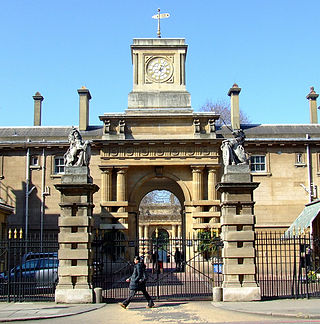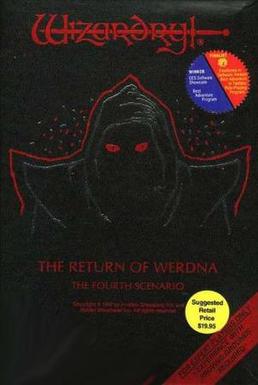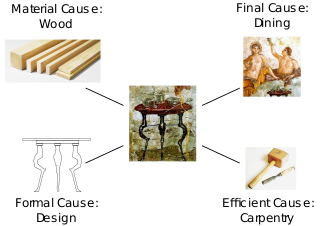Related Research Articles
MIPS is a family of reduced instruction set computer (RISC) instruction set architectures (ISA) developed by MIPS Computer Systems, now MIPS Technologies, based in the United States.

In computer programming, the flyweight software design pattern refers to an object that minimizes memory usage by sharing some of its data with other similar objects. The flyweight pattern is one of twenty-three well-known GoF design patterns. These patterns promote flexible object-oriented software design, which is easier to implement, change, test, and reuse.

The Merkava is a series of main battle tanks used by the Israel Defense Forces and the backbone of the IDF's armored corps. The tank began development in 1970, and its first generation, the Merkava mark I, entered official service in 1979. Four main variants have been deployed. As of 2023, the Merkava mark IV is the latest version. The Merkava was first used extensively in the 1982 Lebanon War. The name "Merkava" was derived from the IDF's initial development program name.

The Methodist Central Hall is a multi-purpose venue in the City of Westminster, London, serving primarily as a Methodist church and a conference centre. The building, which is a tourist attraction, also houses an art gallery, a restaurant, and an office building. It contains 22 conference, meeting and seminar rooms, the largest being the Great Hall, which seats 2,300.

The British threepence piece, usually simply known as a threepence, thruppence, or thruppenny bit, was a denomination of sterling coinage worth 1⁄80 of one pound or 1⁄4 of one shilling. It was used in the United Kingdom, and earlier in Great Britain and England. Similar denominations were later used throughout the British Empire and Commonwealth countries, notably in Australia, New Zealand and South Africa.

The Panzerkampfwagen III, commonly known as the Panzer III, was a medium tank developed in the 1930s by Germany, and was used extensively in World War II. The official German ordnance designation was Sd.Kfz. 141. It was intended to fight other armoured fighting vehicles and serve alongside and support the similar Panzer IV, which was originally designed for infantry support. However, as the Germans faced the Soviet T-34 and KV-1, more powerful anti-tank guns were needed, and since the Panzer IV had more development potential with a larger turret ring, it was redesigned to mount the long-barrelled 7.5 cm KwK 40 gun. The Panzer III effectively swapped roles with the Panzer IV, as from 1942 the last version of the Panzer III mounted the 7.5 cm KwK 37 L/24 that was better suited for infantry support. Production of the Panzer III ceased in 1943. Nevertheless, the Panzer III's capable chassis provided hulls for the Sturmgeschütz III assault gun until the end of the war.

This article lists production figures for German armored fighting vehicles during the World War II era. Vehicles include tanks, self-propelled artillery, assault guns and tank destroyers.

The Royal Mews is a mews, or collection of equestrian stables, of the British royal family. In London these stables and stable-hands' quarters have occupied two main sites in turn, being located at first on the north side of Charing Cross, and then within the grounds of Buckingham Palace.

The Cromwell tank, officially Tank, Cruiser, Mk VIII, Cromwell (A27M), was one of the series of cruiser tanks fielded by Britain in the Second World War. Named after the English Civil War-era military leader Oliver Cromwell, the Cromwell was the first tank put into service by the British to combine high speed from a powerful, reliable engine and reasonable armour. The intended dual-purpose high velocity gun could not be fitted in the turret, so a medium velocity dual purpose gun was fitted instead. Further development of the Cromwell combined with a high velocity gun led to the Comet tank.

The parol evidence rule is a rule in the Anglo-American common law that governs what kinds of evidence parties to a contract dispute can introduce when trying to determine the specific terms of a contract. The rule also prevents parties who have reduced their agreement to a final written document from later introducing other evidence, such as the content of oral discussions from earlier in the negotiation process, as evidence of a different intent as to the terms of the contract. The rule provides that "extrinsic evidence is inadmissible to vary a written contract". The term "parol" derives from the Anglo-Norman French parol or parole, meaning "word of mouth" or "verbal", and in medieval times referred to oral pleadings in a court case.

Nazi Germany developed numerous tank designs used in World War II. In addition to domestic designs, Germany also used various captured and foreign-built tanks.

British heavy tanks were a series of related armoured fighting vehicles developed by the UK during the First World War. The Mark I was the world's first tank, a tracked, armed, and armoured vehicle, to enter combat. The name "tank" was initially a code name to maintain secrecy and disguise its true purpose by making it appear to be a water transport vehicle for bringing water to the troops at the front line. The tank was developed in 1915 to break the stalemate of trench warfare. It could survive the machine gun and small-arms fire in "no man's land", travel over difficult terrain, crush barbed wire, and cross trenches to assault fortified enemy positions with powerful armament. Tanks also carried supplies and troops.

In Dianetics and Scientology, auditing is a sequence of actions whereby the "auditor" takes an individual through times in their current or past lives with the purpose of ridding the individual of negative influences from past events or behaviors. According to practitioners, auditing is meant to bring the individual to "Clear" status; thus, an individual being audited is known as a "preclear" or PC.

Wizardry IV: The Return of Werdna is the fourth scenario in the Wizardry series of role-playing video games. It was published in 1987 by Sir-Tech Software, Inc. It was later ported on home consoles, such as the PC Engine CD and the PlayStation, through the Wizardry: New Age of Llylgamyn compilation.

The four causes or four explanations are, in Aristotelian thought, four fundamental types of answer to the question "why?", in analysis of change or movement in nature: the material, the formal, the efficient, and the final. Aristotle wrote that "we do not have knowledge of a thing until we have grasped its why, that is to say, its cause." While there are cases in which classifying a "cause" is difficult, or in which "causes" might merge, Aristotle held that his four "causes" provided an analytical scheme of general applicability.

The Mark IV was a British tank of the First World War. Introduced in 1917, it benefited from significant developments of the Mark I tank. The main improvements were in armour, the re-siting of the fuel tank and ease of transport. A total of 1,220 Mk IV were built: 420 "Males", 595 "Females" and 205 Tank Tenders, which made it the most numerous British tank of the war. The Mark IV was first used in mid 1917 at the Battle of Messines Ridge. It remained in British service until the end of the war, and a small number served briefly with other combatants afterwards.
An extrinsic semiconductor is one that has been doped; during manufacture of the semiconductor crystal a trace element or chemical called a doping agent has been incorporated chemically into the crystal, for the purpose of giving it different electrical properties than the pure semiconductor crystal, which is called an intrinsic semiconductor. In an extrinsic semiconductor it is these foreign dopant atoms in the crystal lattice that mainly provide the charge carriers which carry electric current through the crystal. The doping agents used are of two types, resulting in two types of extrinsic semiconductor. An electron donor dopant is an atom which, when incorporated in the crystal, releases a mobile conduction electron into the crystal lattice. An extrinsic semiconductor which has been doped with electron donor atoms is called an n-type semiconductor, because the majority of charge carriers in the crystal are negative electrons. An electron acceptor dopant is an atom which accepts an electron from the lattice, creating a vacancy where an electron should be called a hole which can move through the crystal like a positively charged particle. An extrinsic semiconductor which has been doped with electron acceptor atoms is called a p-type semiconductor, because the majority of charge carriers in the crystal are positive holes.

DSB class MZ was a series of 61 diesel-electric locomotives operated by Danske Statsbaner. They were built by NOHAB between 1967 and 1978 under licence from General Motors EMD with subcontractors Thrige-Titan and Frichs. There were four series of the locomotive built, designated I – IV.

SoundSticks are multimedia speakers sold by Harman Kardon, originally co-developed with Apple Inc. They were released in July 2000. They are a 2.1 system with a pair of satellite speakers and a subwoofer called the iSub, which was originally available first in October 1999 as a standalone product. They were designed by Jony Ive and have received numerous accolades for their industrial design. Harman Kardon released updated versions in 2004, 2009, 2012 and 2020.